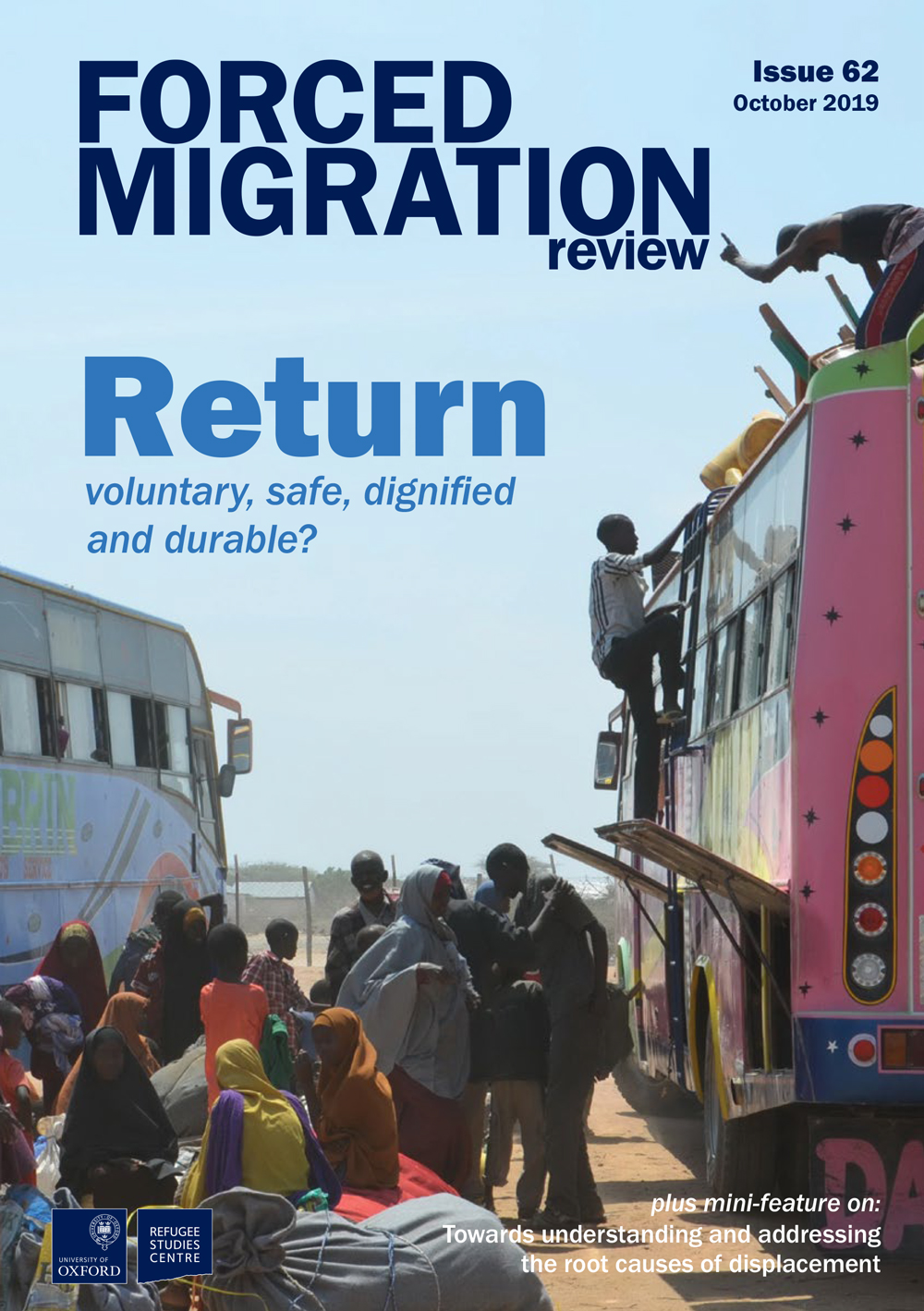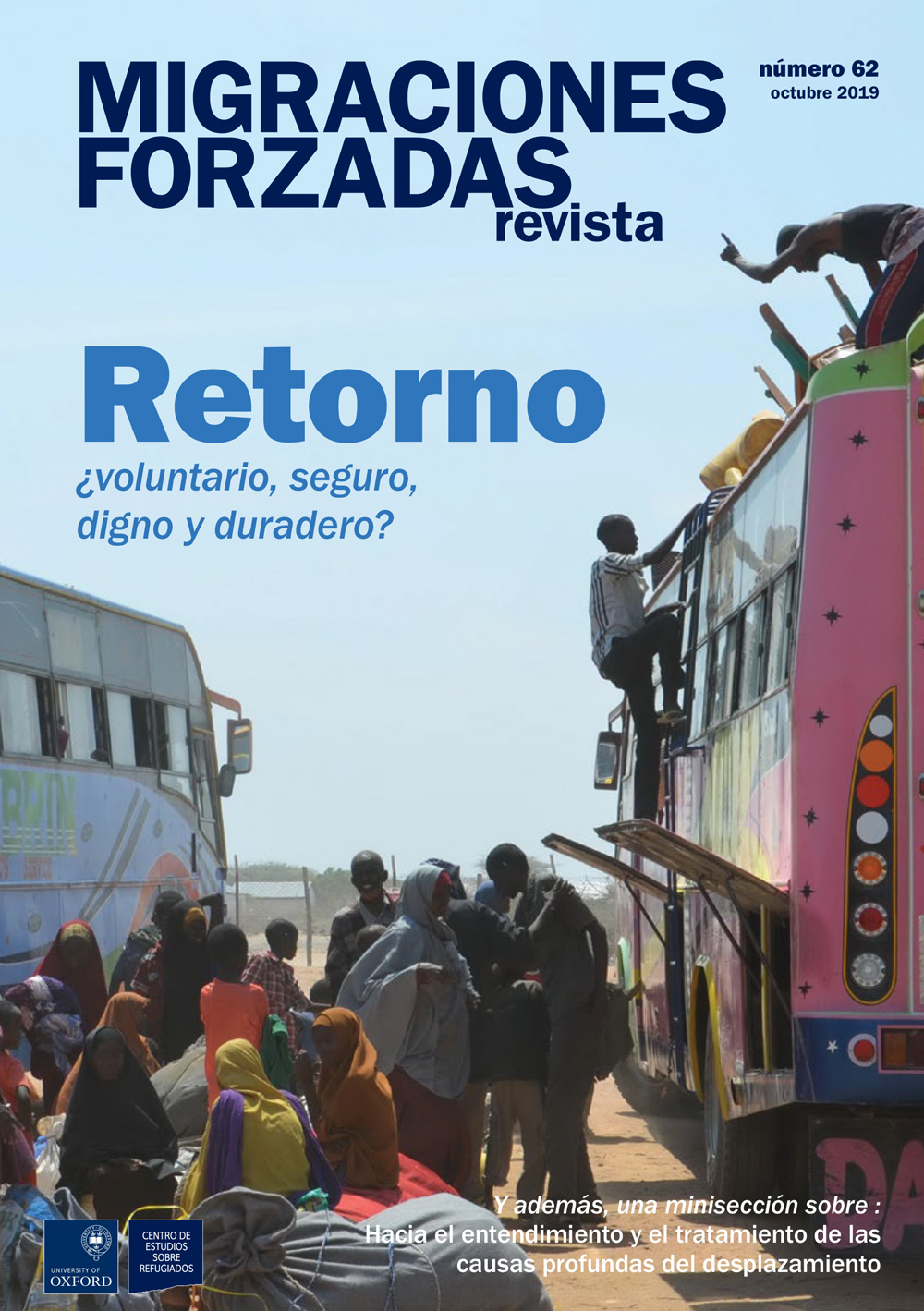From the editors
Voluntary return in safety and with dignity as a durable solution to displacement has long been a core tenet of the international refugee regime. In the 23 articles on Return in this issue of FMR, authors explore various obstacles to…
Resilience spaces: rethinking protection
In Colombia, internal displacement caused by armed conflict or generalised violence is often followed by further displacement towards cities where families seek assistance, protection and economic opportunities. An estimated 87% of these internally displaced people (IDPs) come from rural areas,…
The Palestinian refugee question: root causes and breaking the impasse
The ‘root causes’ of Palestinian displacement – the largest and longest-standing protracted refugee situation in the world[1] – are complex and their impact has grown over time as they continue unaddressed. They date back to the early 20th century, when…
Gang violence, GBV and hate crime in Central America: State response versus State responsibility
The Northern Triangle of Central America (NTCA)[i] continues to be affected by significant displacement. Large movements of people travelling in ‘caravans’ since October 2018 have increased visibility of the situation but responses to the root causes of mobility remain lacking.…
Community-level conflict prevention and peace building in DRC and Somalia
Over the years, the aid industry has struggled to find durable solutions to displacement, given the complex and interwoven factors that are involved. There is an emerging consensus that better coordination between humanitarian, development and peace actors (known as the…
Land and conflict: taking steps towards peace
Competition over land is a common cause of conflict, one that becomes explosive when it overlaps with other causes of conflict. Some of the key contributory elements that exist in contexts where land issues cause violent conflicts (and displacement) are:…
Shifting power and changing practice to support locally led peace building
The majority of the world’s refugees are driven from their homes by conflict, often finding that the dynamics and underlying tensions from the conflict they are fleeing are transplanted into their new surroundings. More than half of all refugees come…


